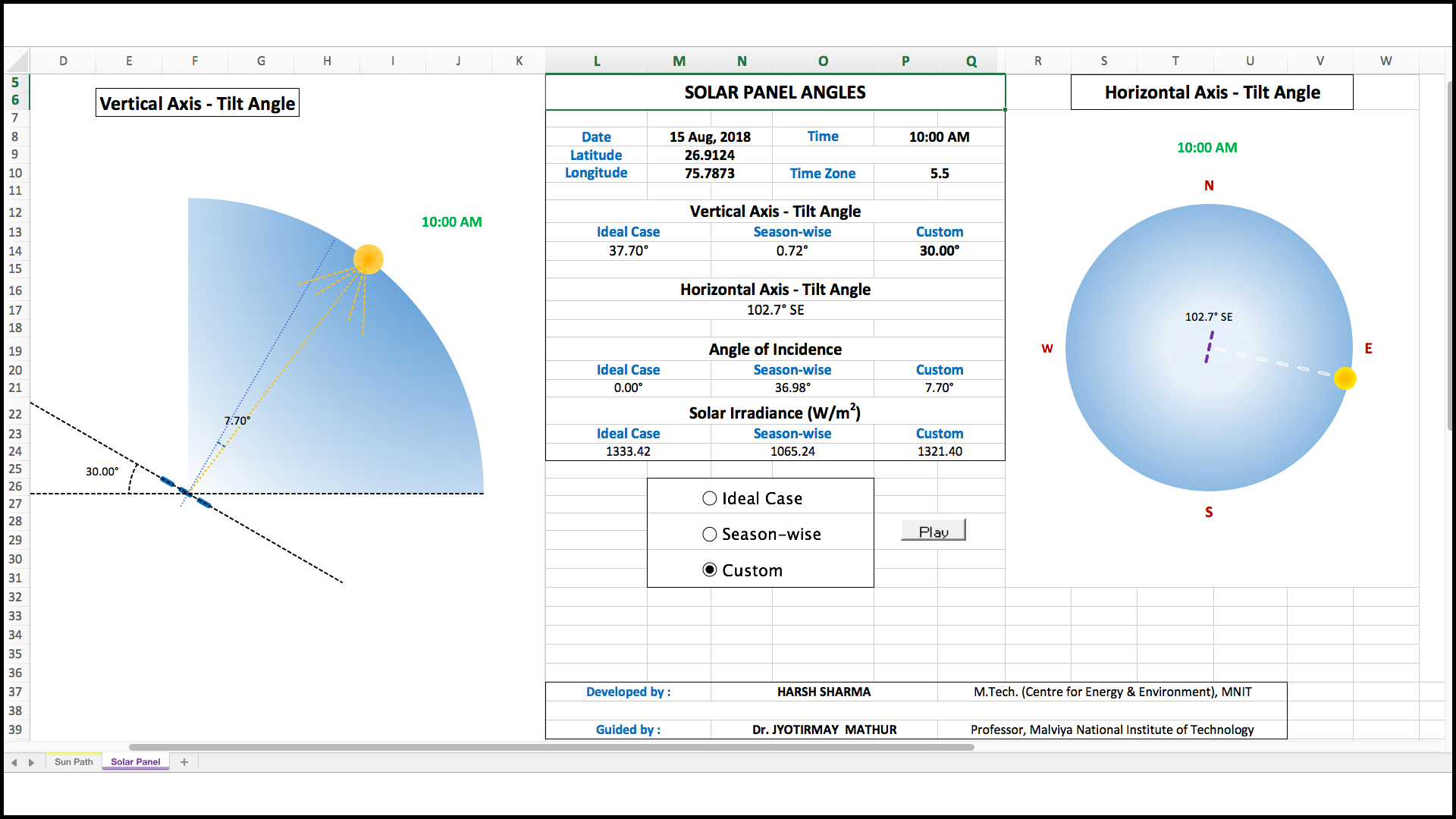It is a calculator which exhibits the Sun Path for any particular place, all over the world, along with the positioning and placement of the Solar Panels, ensuring maximum utilization of incident solar power.
Solar CalculatorIt has been developed over the Microsoft Excel platform and comprises of two sheets namely: Sun Path and Solar Panel.
The Sun Path sheetIt can prove to be a vital tool to sense the path followed by the sun at any particular place, which can further be useful for building orientations and in various solar thermal applications.
It will be invigorating for the Solar Tracking systems by providing the exact angles for the placement of the solar panels for maximum utilization of the solar insolation.
This Solar Calculator aids in sensing the path of the Sun firstly, and further suggests the necessary measures that could be employed for maximum utilization of the incident Solar Energy.

|

|

|
The commercial reference building models for office building typology has been developed , Dr. Mayank Bhatnagar as a part of his PhD work under the supervision of Professor Jyotirmay Mathur, Malaviya National Institute of Technology, Jaipur, India and Professor Vishal Garg, International Institute of Information Technology, Hyderabad, India.
The models are developed using EnergyPlus version 8.5 for representative cities (Ahmedabad, Bengaluru, Kolkata, Lucknow) of 4 different climate zones of India. The reference buildings are developed for low-rise and high-rise office buildings with 8-hours and 24-hours operation based on data collection of 230 buildings constructed in the last 10-years.
These models may be used for the development of commercial building energy codes and standards, buildings research to assess new technologies; optimize designs; analyse advanced controls; and to conduct lighting, ventilation, and air-conditioning studies.
The detailed literature can be found from below links:
1. Development of reference building models for India
2. Development of a Method for Selection of Representative City in a Climate Zone
The objective of the tool is to evaluate the effect of passive design strategies on indoor thermal comfort and shows variety of graphical representations of hourly climate data for a selected location. Furthermore, its added features help to see visually the unique overall pattern.
It comprises of 10 tabs namely:
The function of bioclimatic charts is to simplify the study of environmental conditions for a selected locality for thermal comfort of people. It uses temperature and humidity data of that location to study passive strategies. Based on the climatic data study, tool can recommend some design guidelines for the unconditioned building constructions.
The details of how to use the tool is present in the “Help” menu of the tool.
The passive design consultant tool for composite climate of India is developed by Mr. Raj Gupta as a part of his MTech. work under the supervision of Professor Jyotirmay Mathur, Malaviya National Institute of Technology, Jaipur, India. And the project was funded by Indian society of Heating, Ventilation and Air-conditioning Engineers (ISHRAE).